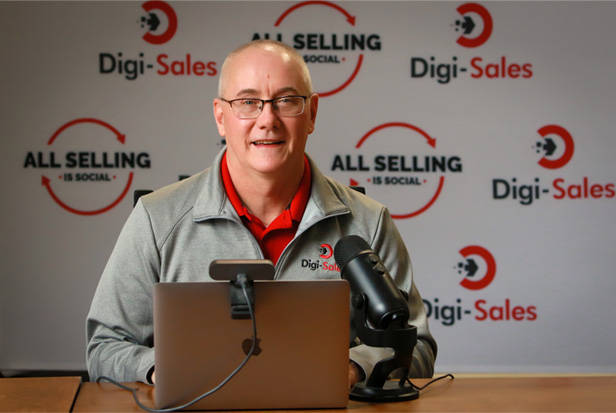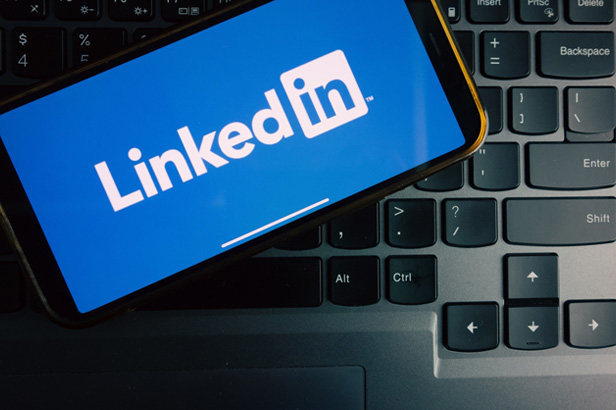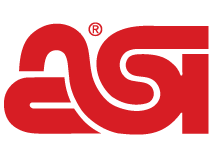Strategy October 17, 2025
Q&A: What Makes LinkedIn Such a Powerful Tool for Salespeople
Bill McCormick, founder of Digi-Sales, shares some best practices for building lasting connections on the networking platform.
Key Takeaways
• LinkedIn remains a powerful B2B sales tool, with 89% of marketers using it for lead generation and 62% reporting success.
• Salespeople should transform their LinkedIn profiles from resumes to resources and leverage second-degree connections for targeted referrals.
• Connecting and immediately pitching someone on the platform is a big no-no, as is connecting and then never following up.
With 1.2 billion members and 1.77 billion monthly visits to the platform, LinkedIn is undoubtedly a powerful tool for expanding your professional network. It’s also highly effective for lead generation and sales, particularly in the business-to-business arena. In fact, 89% of B2B marketers say they use LinkedIn for lead generation, and 62% say it’s produced leads for them, according to stats from the social media app.

Bill McCormick, Digi-Sales
Bill McCormick, founder of Digi-Sales and host of The All Selling Is Social podcast, learned early on the power of LinkedIn, leveraging digital sales techniques back in 2013 after he and his wife, Sue, started their own promotional products business, Team Creative Connections (asi/341187), where McCormick still serves as vice president and account executive. In this Q&A, he shares what works, what doesn’t and why it’s important to have a systematic approach to selling on LinkedIn.
Q: Why is LinkedIn such a good tool for salespeople?
It’s really tailor-made for business to business. Salespeople can use it to network, do business development and find clients. Most professionals have some kind of a presence on the platform. As soon as somebody changes jobs, they change it on their LinkedIn profile, and you can be notified of that. I get a lot of business from that because somebody changes jobs and no one’s more apt to make a change in their purchasing decisions than a new person in a new position.
Q: Can you share some success stories you or a client have had with LinkedIn?
A: From 2014 to 2018, when I was still part of my wife’s promo business, I could trace about $500,000 worth of sales directly to LinkedIn being part of the purchase process. Since becoming a consultant, I’ve worked with a VP of sales and his team at an event displays company who saw a 25% increase in meetings by leveraging LinkedIn to find and engage clients.
Q: What’s the most powerful tool on LinkedIn for salespeople?
A: If I had to whittle it down to just one thing, it would be the ability to search our second-degree connections, the people who are connected to someone we’re mutually connected to. The way I put it is: Who knows who you want to know? You’re not just waiting for that referral – you’re actually able to ask for it by name and by position.

Q: What are some best practices for using LinkedIn effectively?
A: First, understand what your profile is. It’s not a place to highlight how great you are at everything, unless you’re looking for a job. If you’re using it for sales, and you’re saying how great you are, and how great your product and services are, nobody cares. Everybody says that. You have to transform your profile from a resume to a resource. Talk about the value you provide, and if you don’t know what that value is, talk to your clients and find out.
Second, you have to connect with your clients because they can be a great referral source. Everybody says they want referrals, but hardly anyone knows how to ask for them. Picture this: You’re going into a meeting with a happy client. Before you go, search their LinkedIn connections and see who they know that you want to know. Which VPs of marketing are they also connected to on LinkedIn? At the end of the meeting, you can just say: “I was taking a look at your LinkedIn profile, and there are 10 other VPs of marketing you’re connected to. I’m curious how well you know these people. Can I run these names by you? Is there anyone you feel comfortable introducing me to? Or would it be OK if I reached out and said we were talking and you recommended that I connect with them?”
Q: What are some practices you should avoid on LinkedIn?
A: Connecting and pitching is probably the biggest pet peeve of everyone on LinkedIn. And listen, it rarely works because it’s a completely transactional relationship. You wouldn’t walk up in a networking environment and just start pitching everyone you hand your card to. What you want to do is cultivate a relationship.
When you connect with people, don’t forget them. A lot of us do that. We have to treat people in the digital space the same way we would treat them face-to-face. If we were at a networking event and I said, “Hey, I’m Bill,” then turned and walked away, that would be downright rude. But we do that on LinkedIn all the time. Look at LinkedIn as a 24-7-365 networking room that’s full of a billion people.
